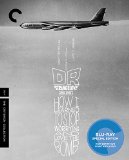| Reviews & Columns |
|
Reviews DVD TV on DVD Blu-ray 4K UHD International DVDs In Theaters Reviews by Studio Video Games Features Collector Series DVDs Easter Egg Database Interviews DVD Talk Radio Feature Articles Columns Anime Talk DVD Savant Horror DVDs The M.O.D. Squad Art House HD Talk Silent DVD
|
DVD Talk Forum |
|
|
| Resources |
|
DVD Price Search Customer Service #'s RCE Info Links |
|
Columns
|
|
|
Dr. Strangelove, Or: How I Learned to Stop Worrying and Love the Bomb
Black comedy defined by Stanley Kubrick
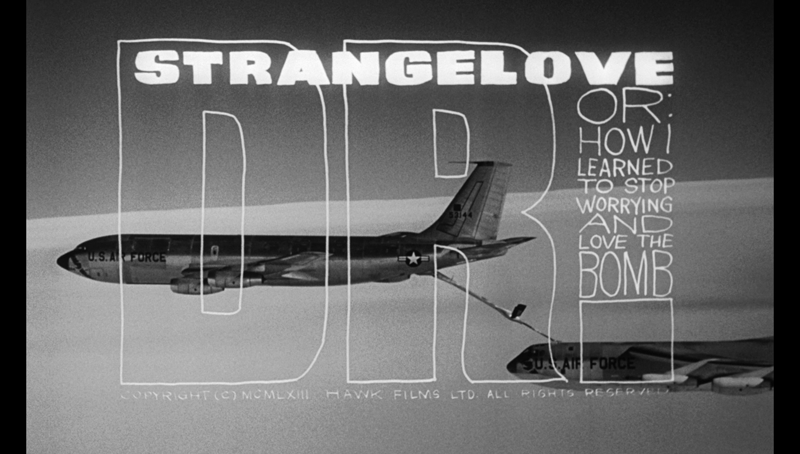
Loves: The Criterion Collection, Peter Sellers visual artistry, black comedy
Likes: Stanley Kubrick
Dislikes: Politics, military egos
Hates: War movies
The Story So Far...
Stanley Kubrick's satirical critique of nuclear weaponry during the Cold War, built off of Peter George's novel Red Alert, has had a number of releases, on DVD and Blu-ray, over the years, including 40th and 45th anniversary editions. DVDTalk has reviews of three of those titles.
The Movie
Stanley Kubrick may be one of the most divisive accepted masters in cinema. No one can deny that he is one of the true greats, but even amongst hardcore film fans, it's not easy to find people who like his work across the board. They may love The Shining and A Clockwork Orange, but will avoid Barry Lyndon and Eyes Wide Shut like exes at a reunion. Or perhaps, it's vice versa. That's what happens when your career takes you all over the map, from war films to horror to sci-fi to erotic whatever-the-heck-Tom-and-Nicole-made. However, if there's one Kubrick film that's universally viewed as an all-time great, it's likely Dr. Strangelove: Or How I Learned to Stop Worrying and Love the Bomb, a brilliant dark comedy that was perfect for its time, yet also timeless, thanks to universal themes, intriguing characters and Kubrick's exacting eye.
In the midst of the Cold War between the United States and Russia, and in the middle of a military exercise, General Jack D. Ripper (Sterling Hayden) gives the planes he has over Russia the go-ahead to drop their nuclear bombs. While the soldiers in the air, lead by pilot Major Kong (Slim Pickens), prepare themselves for the unthinkable, on the ground, the government and military, including President Merkin Muffley (Peter Sellers), General Buck Turgidson (George C. Scott) and likely insane scientist Dr. Strangelove (also Sellers), meet in the Pentagon's War Room to decide how they deal with the possible start of World War III. At the same time, British Group Captain Lionel Mandrake (Sellers again), trapped on a base with Ripper, tries to coax the code to stop the bombers out of the mad man. The clock is counting, the odds are not good and logic does not rule the day. There's also the small issue that Russia has a doomsday device and is willing to use it.
The entire film essentially takes place in just two locations: on the bomber and in the War Room, with the moments with Mandrake and Ripper mainly serving to advance the plot (even if they are transfixing moments between two great performers.) The film has the feel of a stage play seen through the eyes of a great visual artist, with the story unfolding mainly in the dialogue, which manages to be unrelentingly funny despite the film's depressing core. Though at times it can be in-your-face and verge on juvenile, such as obvious names like Kissoff Bat Guano and an unnecessary spray of soda from a bullet-damaged dispenser, it's also intensely clever and even subtle at times. Impressively, all the main characters getting a chance to shine at one point or another. Scott, in particular, is tremendous as Turgidson, staying just this side of volcanic rage, while also displaying an almost childlike attitude to go with it.
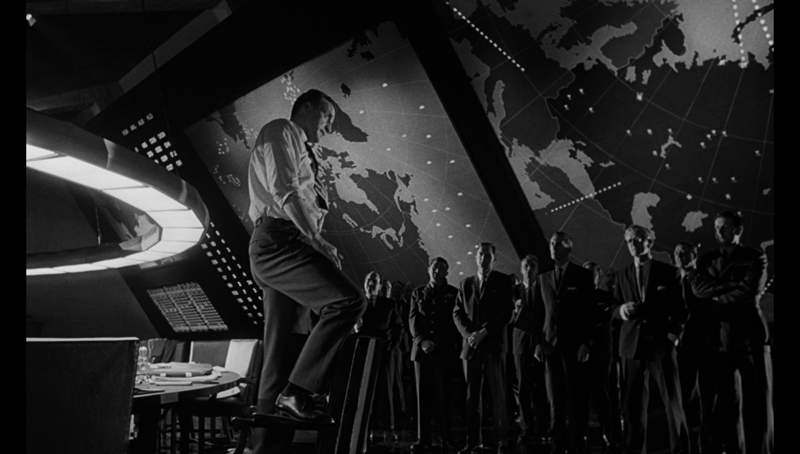
It's impressive to see the kinds of laughs Sellers could get out of playing what's essentially the straight man in two of the three roles, but opposite the mad Ripper he's almost as good as he is on the phone with Russia, a conversation that's hilarious in its banality. The best though is Sellers as Strangelove, a wheelchair-bound possible former Nazi who struggles to maintain control over an arm that seemingly has a mind of its own. This part of the film is simply a masterclass in physical comedy, as Sellers battles against himself, and does a magnificent job at it, creating an indelible scene and character.
Partnering with Sellers in pushing this film was Kubrick, whose vision for this world is displayed in stunning black and white. The disorienting use of mirrors, odd angles and harsh shadows enhance the visual impact of the film and make sure that the feel of the film is boosted by what happens on-screen, whether it's the claustrophobic set of the bomber jet, the stark isolation of the dark void in the War Room or the bullet-strewn setting of the bomber base. Frames are constructed carefully in order to create an appealing look at an undesirable concept, only adding to the impact of the words being spoken, as they join together in a kind of aesthetic balance between the sound of the dialogue and intricacies of the image you're watching. The results are incredible.
As good as the film is overall, the ending is rather weak, almost settled for rather than reached. There may not have been a more satisfying conclusion to the story the film presents, but as it is, it doesn't seem like the destination was worth the journey. Of course, getting there is half (or in this case all) of the fun, and that suddenly finale likely says a good deal about the film's themes without actually coming out and saying it. Maybe the point truly is that a nuclear deterrent is meaningless in the end, considering what happens if you actually decide to use it. Considering how bumbling, psychotic and self-centered everyone involved in the plot is, that certainly makes sense.
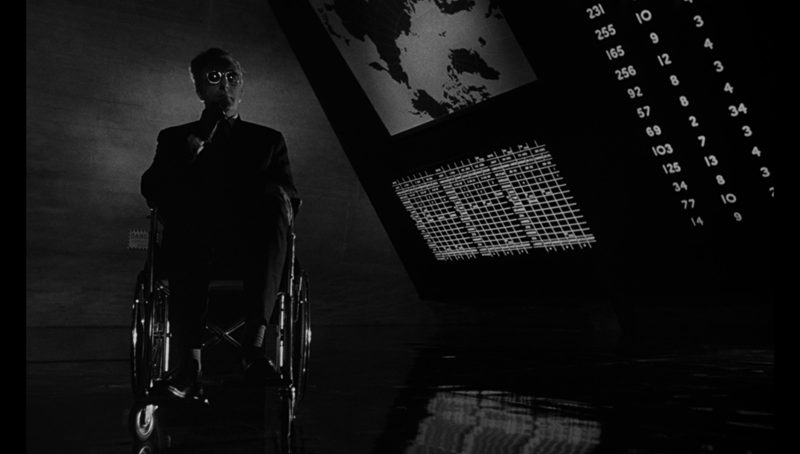
The Disc
Criterion's release of Dr. Strangelove: Or How I Learned to Stop Worrying and Love the Bomb (spine number 821) arrives on one Blu-ray disc in a thin digipak folder featuring art of explosions and Slim Pickens, which is inside a thin slipcase, along with an envelope from Strategic Air Command, marked top secret. The classic Criterion menu, with a montage of footage set to the very militaristic version of "When Johnny Comes Marching Home" from the film, gives the choice to watch the film, navigate the timeline, select scenes, adjust the setup and check out the special features. Audio options include an English DTS-HD Master Audio 5.1 track and an English LPCM 1.0 track, while English SDH subtitles are available.
The Quality
The 1080p, AVC-encoded 1.66:1 transfer (in the now-generally accepted standard aspect ratio for this film) underwent a Herculean effort on its way to disc, as a 4K transfer was created from a variety of sources, since the original camera negative had been destroyed decades ago. (It would seem that this is the same Cineric transfer Sony released in 2009, however this version has a higher bit rate, which lends itself to a better look.) The massive effort to create this Frankenstein edition, which then underwent further cleanup, resulted in a gorgeously sharp black-and-white image that boasts deep contrast (a key for a number of scenes, but especially for anything in the War Room) and a strong, even layer of grain that lends a truly cinematic look. The level of fine detail is superb, letting you soak in all the detail in the B-52 cockpit or make out everyone around the War Room table clearly. The clarity might make the special effects shots a bit more obvious, but the trade-off is well worth it. There are no obvious concerns with dirt or damage, nor digital distractions. Only some slight jitters in some of the stock footage pulls this presentation away from perfection.
In reviewing Criterion's recent Blu-ray release of The Graduate, I noted that for once, a newer 5.1 mix was actually a more enjoyable listen than the original mono track (a statement which is admittedly blasphemy in many circles.) Well, here we go again. The DTS-HD Master Audio 5.1 track is a great expansion of the original mono presentation, utilizing the side and rear speakers and some effective action in the low-end to boost the score and sound effects while filling out the soundfield more, but without introducing gimmicky mixing that makes no sense for the film. The LPCM 1.0 track is nice and clean and offers good separation of the various elements, but that oomph in the DTS track (a step up from the TrueHD on Sony's 2009 disc) makes a big difference when it comes to the action through this movie, while making sure dialogue is crisp and easily understood. You can really appreciate the effort Kubrick and his team put into the sound, like the positional volume in the War Room.
The Extras
The bonus features kick off with some brief excerpts (3:07) from an audio interview with Kubrick, conducted by physicist and prolific author Jeremy Bernstein on November 27, 1966. Playing over a montage of photos and concept and promotional art, the clips cover the director's connection with Southern and the difference between directing and editing.
It's followed by "Flying Solo: Stanley Kubrick as Producer" (19:14), a piece with film scholar Mick Broderick focusing on the director going it on his own with Dr. Strangelove. Broderick explores how Kubrick's singular vision powered the film, but also dispels some rumors about how he collaborated while sharing stories about the development, production and release of the film.
"Transcending Time: Symboles and Strangelove" (17:25) sees Hofstra University professor Rodney Hill discuss the imagery and themes in Kubrick's films--particularly in Dr. Strangelove--touching on the influence of Joseph Campbell and connections to the work of Freud and Jung. Hill provides an in-depth academic breakdown loaded with examples from across history and Kubrick's canon, pointing out the archetypes in the film and how Kubrick's style affected how he got across his themes.
"Stanley Kubrick's Pursuit of Perfection" (12:13) features new interviews with Joe Dunton and camera operator Kelvin Pike, who talk about the challenges of shooting in black and white, share theories of lighting and lenses, and tell some stories from the set, focusing on how they worked with Kubrick. It's a solid look at the artistic and technical brilliance of Dr. Strangelove.
Another new interview can be found in "Exploding Myths: Richard Daniels on the STanley Kubrick Archive" (14:15), in which the senior archivist gives a brief intro to the archive, and then talks about several interesting elements of the history of Dr. Strangelove, all gleaned from various documents and items in the archive, including evidence of Kubrick's attention to detail, his correspondence with collaborators and fans, and the reasoning behind the final name. There's some tremendously fascinating insight here.
The final new extra is "Deep Impact: David George Remembers Peter George" (10:57), in which the author's son looks at how similar George's book Red Alert is to Dr. Strangelove, and the working and personal relationships his father shared with the director. Getting some background on the source material is certainly appreciated, considering how different the tone is in the two mediums.
Several featurettes from previous releases are included, starting with 2004's No Fighting in the War Room (30:04/full-frame), which focuses on the Cold War and the concern over nuclear attacks that inspired the film. Experts like former Secretary of Defense Robert McNamara and Bob Woodward, along with Spike Lee and Roger Ebert, paint a picture of the social and political climate of the time and how the film reflected the atmosphere of fear. There's a tremendous amount of intriguing info here, particularly about the deleted pie scene and the film's relevance decades later.
Sellers gets some well-deserved spotlight in 2004's Best Sellers (18:28/full-frame), which provides a history of his work, with rare clips and home movies, as well as a number of big names, including Roger Ebert, Shirley MacLaine, David Frost, Bob Woodward, Richard Lester and Michael Palin, paying tribute to the actor's greatness.
From 2000, The Art of Stanley Kubrick: From Short Films to "Strangelove" (13:50/full-frame) brings together experts, collaborators and friends to discuss his growth from a young photographer for Look magazine to a pre-eminent film director. Though this overview of Kubrick's filmography has rather overbearing narration, it's loaded with great trivia about his career.
Also hailing from back in 2000 is Inside Dr. Strangelove (46:04/full-frame) offers a neat, compact exploration of just about every element of the film, from its origins as a book to the cast to its release and promotion. Though most of the main players were unfortunately passed by the time of this documentary's production, the participant list is still quite long and there's a wealth of good info to discover in it.
One of the great bits of ephemera to be included here are the split-screen interviews with Scott and Sellers from 1963 (7:16), which feature the men answering unheard questions. In the days before media junkets, these would be combined with footage from local news stations to create fake interviews, to make it seem like the reporter sat down with the star. They are completely ridiculous and make you wonder what the actors thought while doing them.
More old footage comes from a 1980 Today interview (4::23/full-frame) between Sellers and New York critic Gene Shalit (famed for his hair and moustache.) Recorded just a few months before his passing, Sellers talks about the differences between various film audiences and shows off his range of accents, including a spot-on Michael Caine imitation, so it's obviously a must-see.
Two trailers wrap things up, with "The Exhibitor's Trailer", checking in at a lengthy 16:52, shows full scenes from the film to sell the film to theater owners. Other than the narration, which puts the scenes in context, it's nothing you didn't see in the film. The theatrical trailer (3:24), on the other hand, created under Kubrick's supervision, is a quick-cut blend of clips that give a good feel for the movie without really giving anything away.
If you own the previous Sony Blu-ray release, you may want to hold onto it, as the very detailed picture-in-picture trivia track from that disc and the interview with McNamara are not included here. Similarly, the Advertising galleries from the old Columbia DVDs are also missing (though some of the art can be seen in the featurettes.)
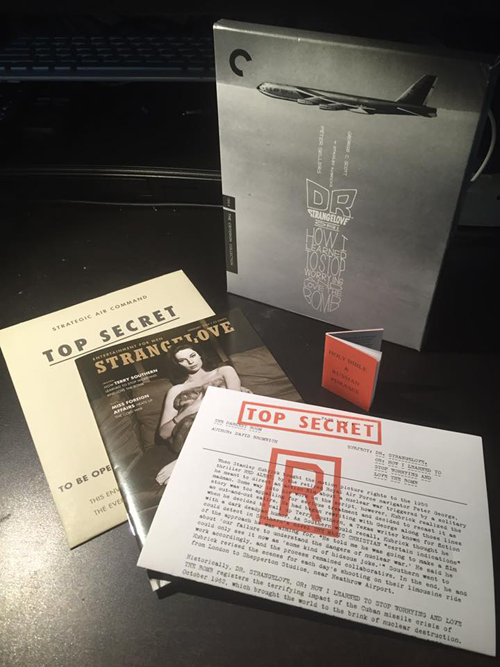
In that top secret envelope in the package, there's a very official-looking memo on two two-sided pages, which presents The Darkest Room, as essay by professor and author David Bromwich. Also included is a small Playboy-styled 24-page magazine (referencing the magazine in the film) with fake ads, pictures of Tracy Reed as Miss Foreign Affairs and an excellent 1994 article written by Southern on the making of the film. While the first two inserts are quite good, the third is the best, if only because it shows Criterion's willingness to go that extra mile. After a page of translations for phrases like "Help!" and "Where is the toilet!",, the traditional film and disc info is included on a miniature (1.75" x 1.25") replica of the Holy Bible and Russian Phrases book from the movie. It's simply a fantastic way to provide this content for fans of the film.
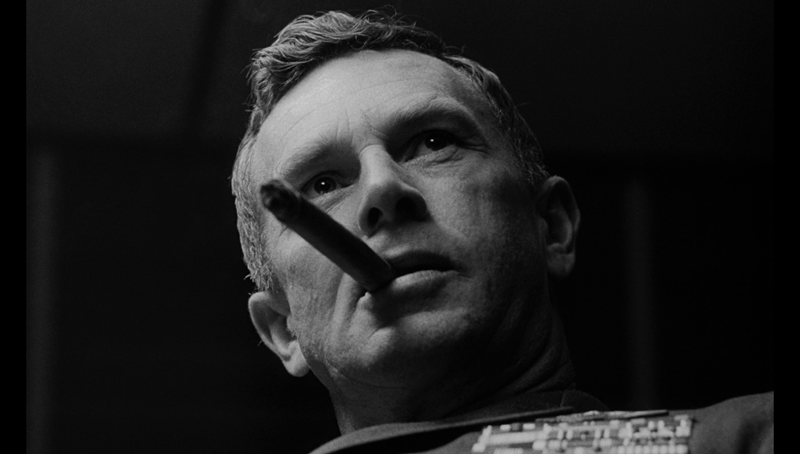
The Bottom Line
Among the best (if not the best) film satires ever, Dr. Strangelove is an amazing film from multiple angles, whether you're talking about the visual artistry, the tremendous performances or the cogent commentary on military power and nuclear weaponry. Criterion has made sure to meet that level of quality with its presentation, and on multiple levels as well, from the excellent audio and video, the terrific packaging and the wealth of bonus content, blending old and new materials to ensure viewers know the movie inside and out. It's hard to imagine anything about this set (other than the few known extras missing) that should be changed. This set belongs on any cinephile's shelf.
Francis Rizzo III is a native Long Islander, where he works in academia. In his spare time, he enjoys watching hockey, writing and spending time with his wife, daughter and puppy.Follow him on Twitter
*The Reviewer's Bias section is an attempt to help readers use the review to its best effect. By knowing where the reviewer's biases lie on the film's subject matter, one can read the review with the right mindset.
|
| Popular Reviews |
| Sponsored Links |
|
|
| Sponsored Links |
|
|
| Release List | Reviews | Shop | Newsletter | Forum | DVD Giveaways | Blu-Ray | Advertise |
|
Copyright 2024 DVDTalk.com All Rights Reserved. Legal Info, Privacy Policy, Terms of Use,
Manage Preferences,
Your Privacy Choices | |||||||









